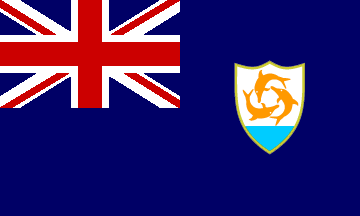The Anguilla Tourist Board (ATB) has coordinated the carnival and boatracing activities since 1997, under the banner "Anguilla Summer
Festival". Organizers promise residence and visitors a fun filled and
exciting eleven days of celebration garnished with traditional
Anguillian hospitality.
Summer Festival on Anguilla is
a typical Caribbean emancipation celebration, it has been occurring on
the island for over a quarter century. It's roots however, are found in
the decades of old traditional August Monday fairs, Bazaars and the old
time Christmas festivities, which features many African influenced
cultural expressions of island life. These activities were organized by
the churches and featured wirewalkers, May pole dancers, Mock-a-Jumbies
and games among other things.
Today's festivities still exude the same charm and spirit of
those early days of festivities. Carnival as we know it today is a
reflection of a typical contemporary Caribbean Carnivals. The Anguilla Summer
Festival Committee's goal is to revive the traditional art forms and
merge them with our modern prospective of mass playing and cultural
extravaganzas.
The Anguilla Summer Festival events feature musical spectaculars, kiddies' parade and grand parade of troupes, J'ouvert, Miss Anguilla Pageant
and bathing suit competition, Prince & Princess Pageant Jr. &
Senior calypso Ms. Talented Teen, International Soca and Reggae Night
and the Leeward Islands Calypso Monarch competition. This much sought
after competition will celebrate its tenth anniversary this year, last
years' winner is Queen Ivena of Antigua. All these activities take
place at the Landsome Bowl Cultural Centre. Ex-site of the Wardens
residence with was destroyed in the 1967 revolution.
Anguilla Summer
Festival focuses on August Monday, which is the first Monday of August,
August Monday officially began to be celebrated in 1940 with
boatracing. This sport has been merged with the cultural aspects of
carnival, which is now known as Summer Festival. Unlike most of the
Anglophile Caribbean islands where cricket is the national sport,
boatracing has outdone cricket as the favorite national pastime for
Anguillians, boatracing is a tradition that dated back many generations
prior to 1940.
The art of Boatracing was born out of the Anguillians' natural love
for and dependence of the sea. Also, the hardships of life, which where
symbolic of the struggle for basic survival between Anguillians' and
there almost desert terrain habitat further, cemented this love for the
sea.
Anguilla had
been a failed plantation for the early British settlers. Very early in
the settlement mission they were forced to abandon the island and flee
to the more fertile places like Cancun, the BVI and St. Croix. This in
turn created on Anguilla a strange and unique colonial sociological situation absent of chattel slavery as was so common in other Caribbean islands.
The frequency of droughts led and forced an intimate dependence on
the sea to compliment and subsidize what the land did not have to offer.
The failure of plantation economy from the 1700's and the severe
economic conditions forced Anguillian men folk to seek employment
overseas including the prosperous cane fields of Macoris and La Romana
in the island of Santo Domingo. It is within this experience of
dependence on the sea for livelihood and the voyages to the Dominican
Republic, that the skill of Boatracing and the art of boat building were
born.
In the days when West Indians from the Leeward area voyaged to Santo
Domingo to cut cane, many were being ferried by Anguillian crafted and
captained boats. Every trip to and from Santo Domingo soon became a
fiercely contested race; so were fishing trips at home. Many of today's
racing boats are named in honor of late 19th century cargo sloops that
ploughed the seas of the southern and western Caribbean. Each boat is a
personality a legend with a story, and a faithful following.
During the Anguilla Summer
Festival boatracing is by day carnival action. Two of our most
tranquil and pristine beaches Sandy Ground and Meads Bay is the main
venues for Boatraces. The clear water and unique crispy white sand are
soaked and trampled upon by thousands of boatracing fans, enthusiasts,
picnickers and dozens of visiting yachts and pleasure boats. Yes, of
course there is live music and blends of food and drinks. Racers are in
three categories A, B & C. The Class A is the most popular and are
the larger craft, in length of 28ft., holding 14 men along with hundreds
of pounds of ballast, hunks of iron and sandbags. These boats are open
hulled and are probably the only open hull traditional sailboat.
Get in to Anguilla to
join us for the Summer Festival 2011 is easy. There are LIAT flights
into the island; other avenues include St. Maarten and Puerto Rico and
St. Thomas. Many of the island's hotels and guest houses are offering
special packages and rates for persons interested in joining us for
carnival and boatracing.

No comments:
Post a Comment